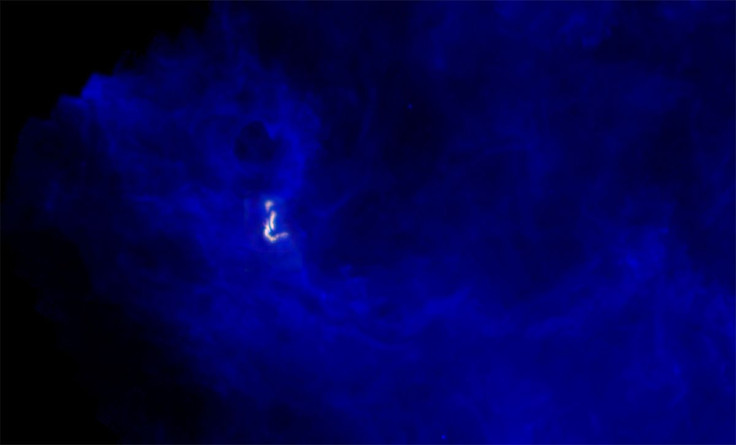Multiple Star System Caught In Initial Stages Of Formation For The First Time Ever

Multi-star systems, which contain two or more stars orbiting each other, are believed to be quite common in our universe. However, since such systems have never been observed in their infancy, the exact process of their formation remained a mystery -- until now.
According to a study published Wednesday in the journal Nature, astronomers have captured a multi-star system in the initial stages of its formation. The first of its kind observation was made in a cloud of gas nearly 800 light-years from Earth and could explain how stable binary star systems are formed and why our solar system has just one parent star.
“Observing the formation and subsequent destruction of these systems will ultimately help us to understand whether our own Sun was once part of such a system and if it was, what happened to its stellar siblings,” Richard Parker from the Liverpool John Moores University, who was involved in the study, said in a statement released Wednesday.
The star system captured using the Very Large Array (VLA) and the Green Bank Telescope (GBT) consists of a core of gas -- known as Barnard 5 (B5) -- containing one protostar and three dense pockets of matter that scientists believe will eventually collapse into stars in an “astronomically-short period” of 40,000 years. What would happen after that remains a matter of speculation, as stellar systems with more than three stars quickly become unstable.
“We know that these stars eventually will form a multi-star system because our observations show that these gas condensations are gravitationally bound,” Jaime Pineda from the ETH Zurich University in Switzerland said in the statement. “At the very least it's going to be a binary (star system).” The two remaining stars might be ejected from the system.
Scientists estimate that the stars produced as a result of the condensation will range in mass from one-tenth to one-third to that of our sun and would be separated by up to 11,000 times the Earth-Sun distance.
© Copyright IBTimes 2024. All rights reserved.






















